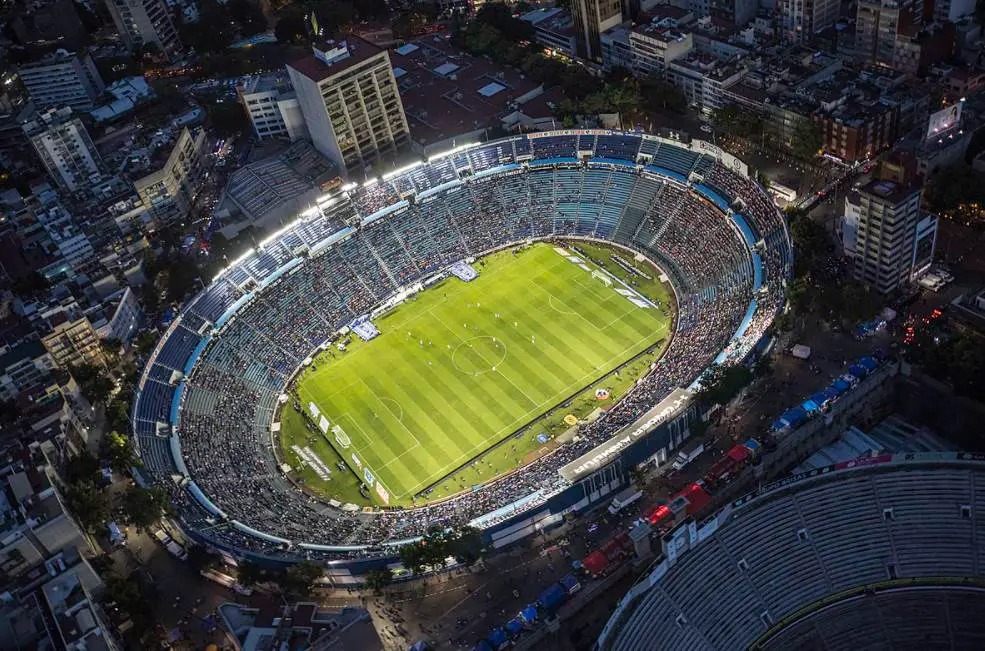The most popular sport in Mexico is association football (or soccer as some countries call it). It’s like a religion as just about any Mexican boy grows up admiring their greatest idols on the football field.
The Liga MX is the highest tier of the national football league in Mexico and games in this league are played in some of the biggest stadiums in the Americas.
Let’s take a closer look at the top 10 biggest stadiums in Mexico. This list also includes one of the most iconic stadiums in the world.
1. Estadio Azteca
- Location: Tlalpan, Mexico City
- Capacity: 87,523
The Estadio Azteca is by far the biggest stadium in Mexico and can also be referred to as one of the most iconic stadiums in the world. It’s here that Diego Maradona scored some of the most memorable goals in history.
The stadium was originally constructed in 1961 and has been renovated several times. It was the first stadium in the world to host 2 FIFA World Cup finals, one in 1970 and another in 1986. Today, the stadium is the home venue of Mexican football club Cruz Azul.
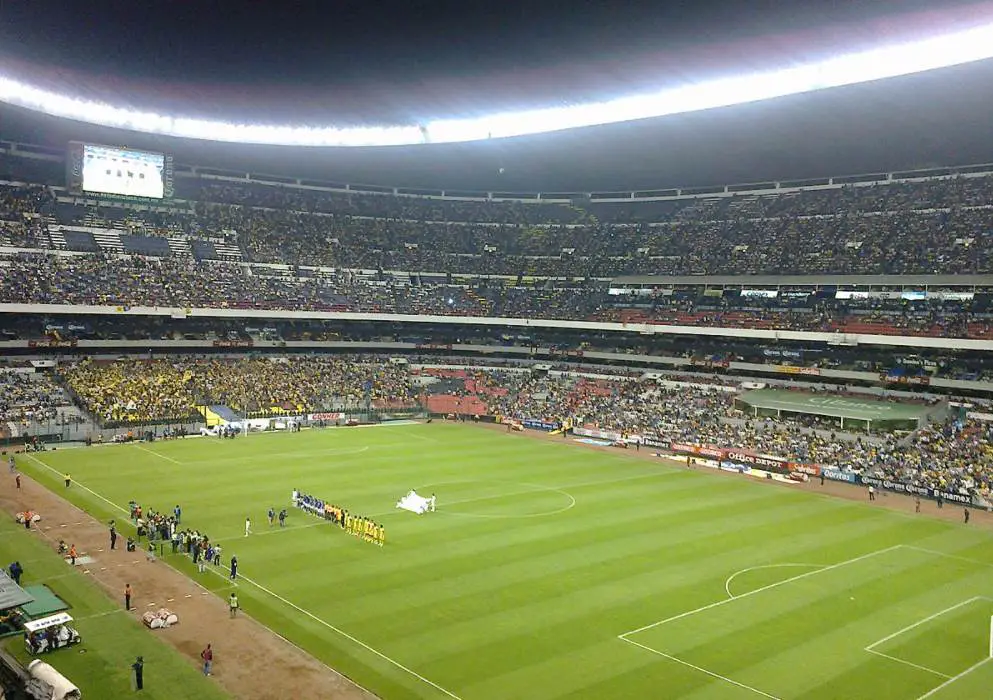
2. Estadio Olímpico Universitario
- Location: Ciudad Universitaria, Mexico City.
- Capacity: 72,000
The Estadio Olímpico Universitario is an immense stadium located in Ciudad Universitaria, the location of the main campus of the University of Mexico in Mexico City. It was constructed between 1950 and 1952 and has been used for a wide variety of purposes, including football, American football, and athletics events.
The main event in the stadium’s history was the 1968 Summer Olympics. The stadium could seat 83,700 spectators at this time but this was later reduced to the current capacity of 72,000. This makes it the second-largest stadium in Mexico at the moment.
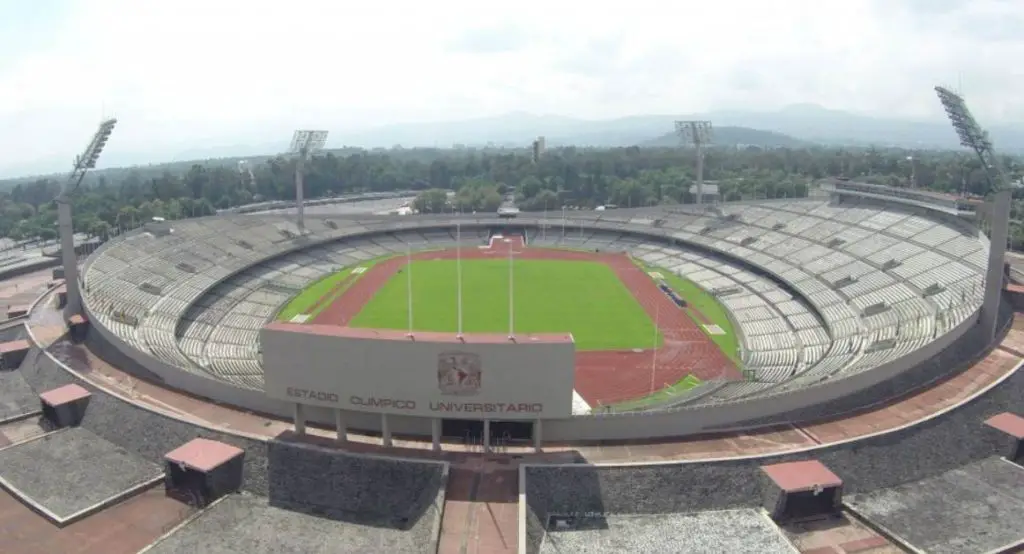
3. Estadio Jalisco
- Location: Guadalajara, Jalisco
- Capacity: 56,713
Estadio Jalisco is another monumental stadium in Mexico that has an extensive history. It was constructed between 1952 and 1960 and is located in Guadalajara, the third-largest city in the country.
The stadium is home to two Mexican football clubs, Atlas in the Liga MX, and Club Universidad de Guadalajara in the Liga de Expansión MX. It’s another Mexican stadium that hosted games in both the 1970 and 1986 FIFA World Cups.
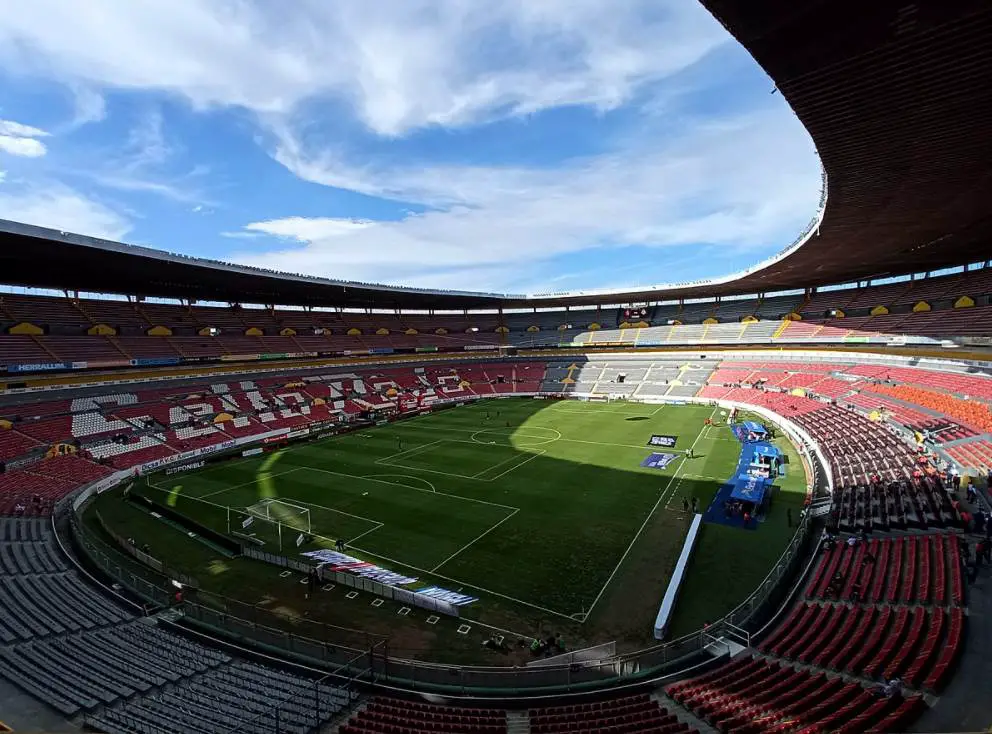
4. Estadio BBVA
- Location: Guadalupe, Monterrey
- Capacity: 53,500
Estadio BBVA is one of the most fascinating new stadiums in Mexico. It was constructed between 2011 and 2015 and is the home venue of Mexican football club C.F. Monterrey. This marked the end of the outdated Estadio Tecnológico which was the club’s home for 63 years.
The nickname of this amazing sports temple is “El Gigante de Acero” or “The Steel Giant,” a reference to the monumental size of the structure and the main construction material. It was also the most expensive stadium ever constructed in Mexico at the time with a total cost of $200 million.
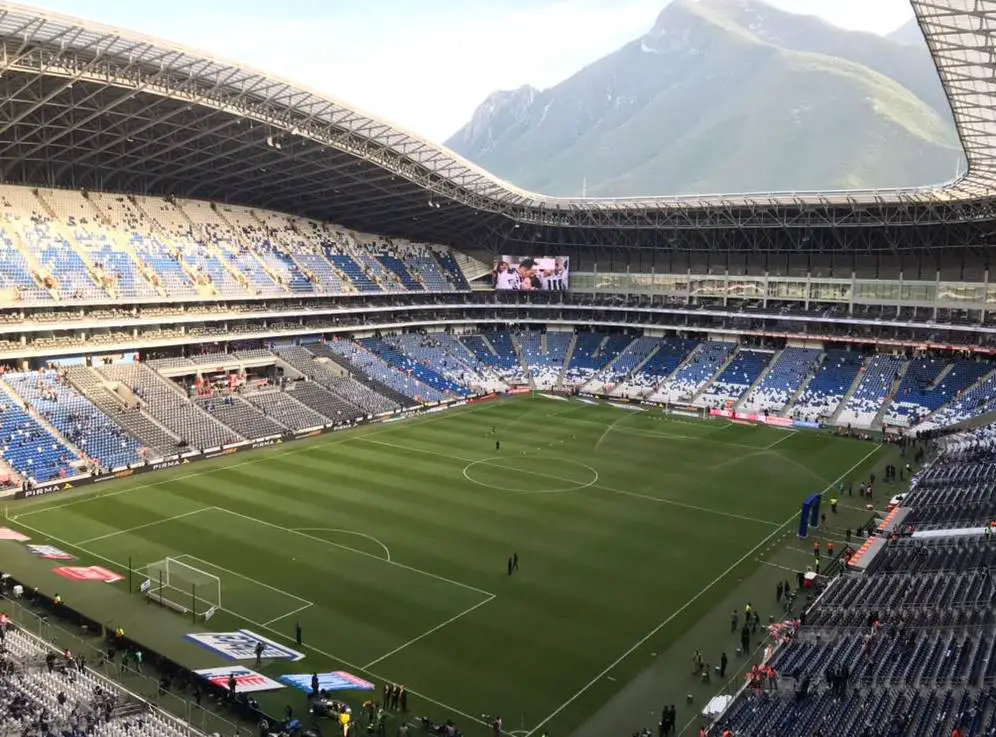
5. Estadio Cuauhtémoc
- Location: Puebla
- Capacity: 51,726
Estadio Cuauhtémoc is the home of Club Puebla and opened its doors in 1968. It hosted several games in the 1970 and 1986 FIFA World Cups and was named in honor of a Mexican brewery called Cuauhtémoc-Moctezuma, a company that chipped in a large chunk of money for its construction.
The stadium underwent a serious renovation in 2015 which added a second tier on the stands behind the goals. This raised the capacity from 42,648 to 51,726 spectators. The entire stadium was also encircled with ETFE (a type of plastic) walls, a feature that produces a remarkable atmosphere.
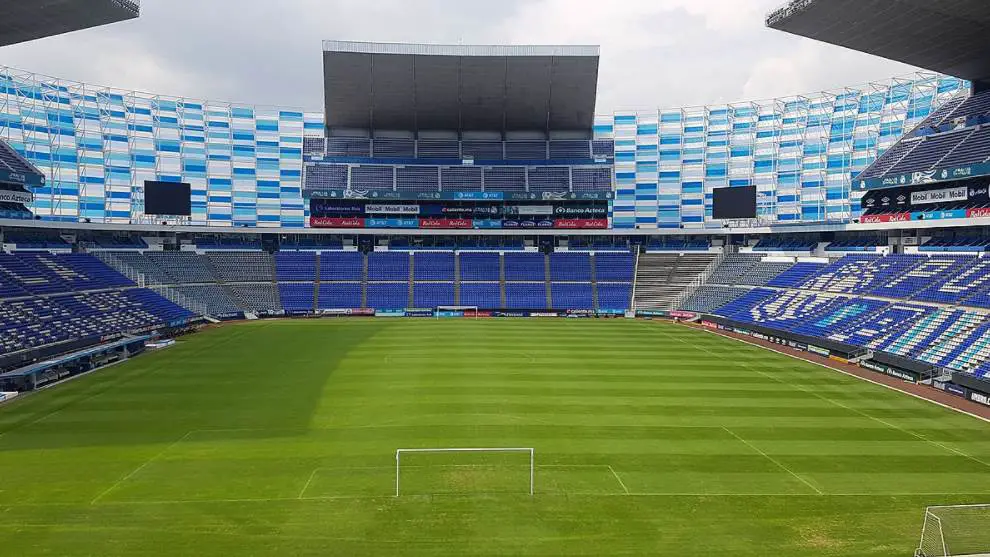
6. Estadio Akron
- Location: Zapopan, Jalisco
- Capacity: 48,071
The Estadio Akron was formerly known as the “Estadio Omnilife” and the “Estadio Chivas” and is the home of the Mexican football club C.D. Guadalajara. The stadium was completed between 2004 and 2010 and also cost nearly $200 million to build.
Because of the huge price tag, the construction of the stadium as delayed multiple times. The opening match of the stadium finally happened n July 27, 2010, which was a game between local game Guadalajara and English football club Manchester United.
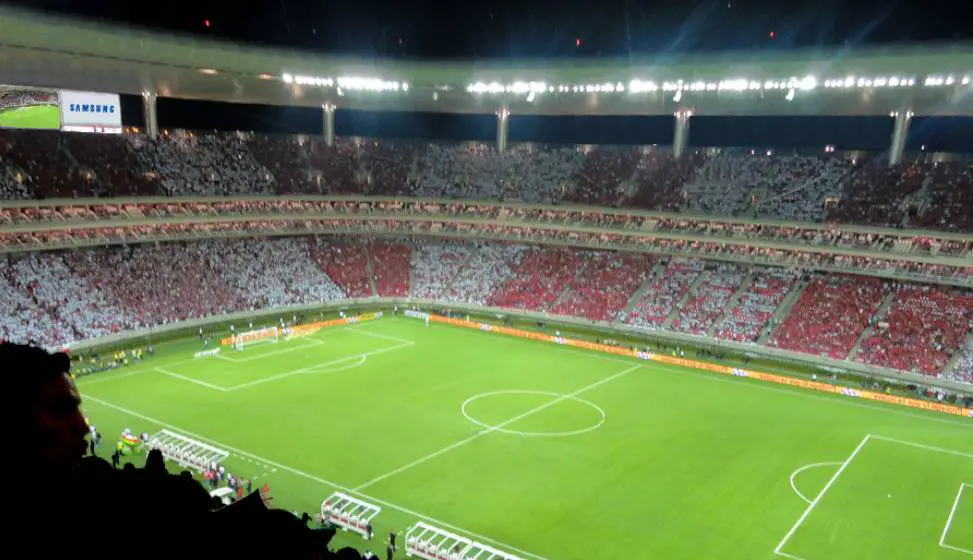
7. Estadio Universitario
- Location: San Nicolás de los Garza, Nuevo León
- Capacity: 41,615
Estadio Universitario is another stadium in Mexico that is located on the campus of a university. It can be found on the campus of the Universidad Autónoma de Nuevo León in the city of San Nicolás de los Garza in the eastern central part of the country.
The stadium was completed in the year 1967 and is the home of the MX club Tigres UANL. The most notable event in the stadium’s history was the games that were played here during the 1986 FIFA World Cup, including the Quarter Final between West Germany and Mexico (0-0 and 4-1 to West Germany after penalties).
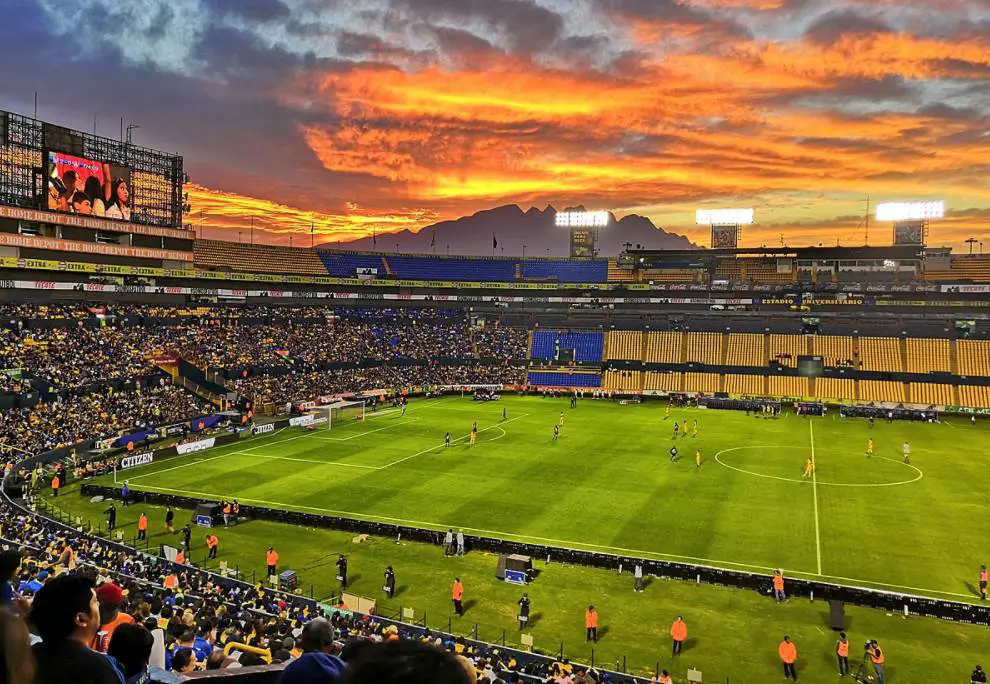
8. Estadio Morelos
- Location: Morelia, Michoacán
- Capacity: 35,000
The Estadio Morelos first opened its doors in 1989 and is the home of the Mexican football club Club Atlético Morelia. It’s located in the city of Morelia which is situated in the central part of the country.
The stadium has been renovated once in its history, a project that was completed in the year 2011. This was also the year that the stadium served as one of the venues of the 2011 FIFA U-17 World Cup.
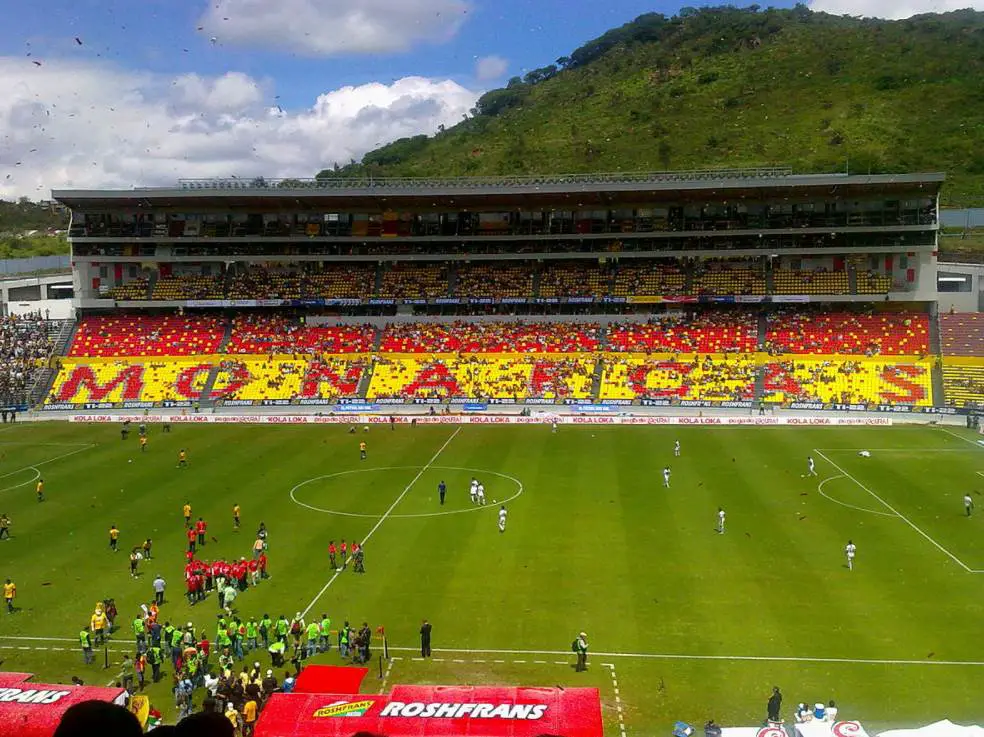
9. Estadio Corregidora
- Location: Querétaro City,
- Capacity: 33,162
The Estadio Corregidora de Querétaro is located in Querétaro City in Central Mexico. It’s the home venue of the Liga MX football club Querétaro FC and is also frequently used for other events such as concerts.
The stadium was completed between 1984 and 1985 which means that it was constructed to serve as one of the venues of the 1986 FIFA World Cup. It hosted several group games and a round of 16 games between Denmark and Spain (1-5).
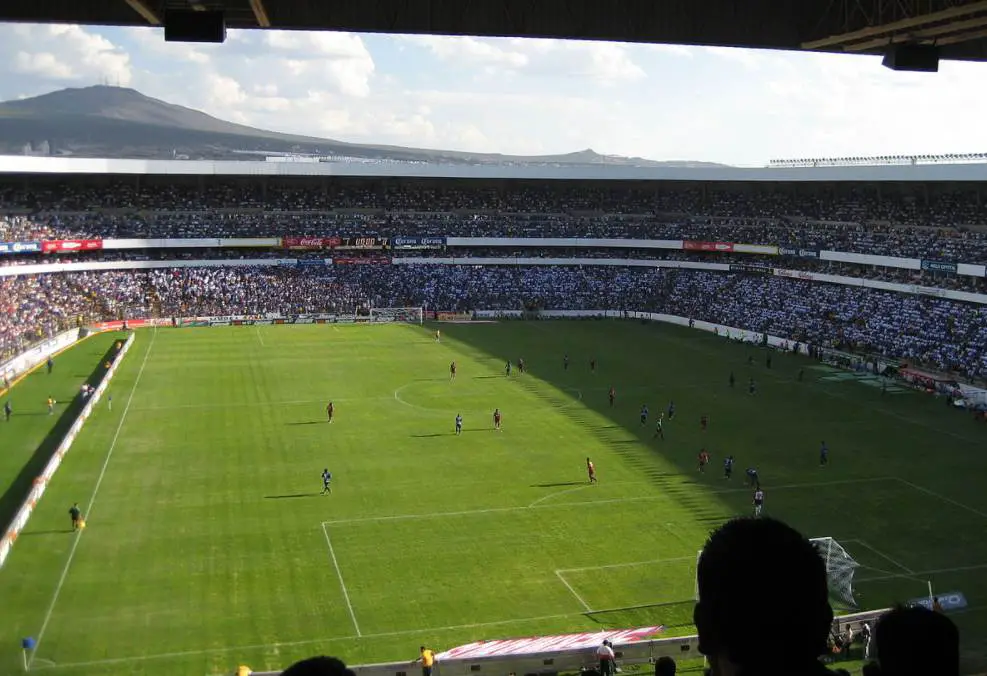
10. Estadio Ciudad de los Deportes
- Location: Benito Juárez, Mexico City
- Capacity: 33,000
Estadio Ciudad de Los Deportes is located in the neighborhood with the same name in Mexico City. It was the former home of Mexican football club Cruz Azul until they moved to the Estadio Azteca in 2018.
What is remarkable about this magnificent arena is that the local government scheduled to demolish it in 2016. This didn’t happen and the plans were put on hold in 2018. The stadium opened its doors in 1946 and is currently still the venue of football club Atlante F.C.
